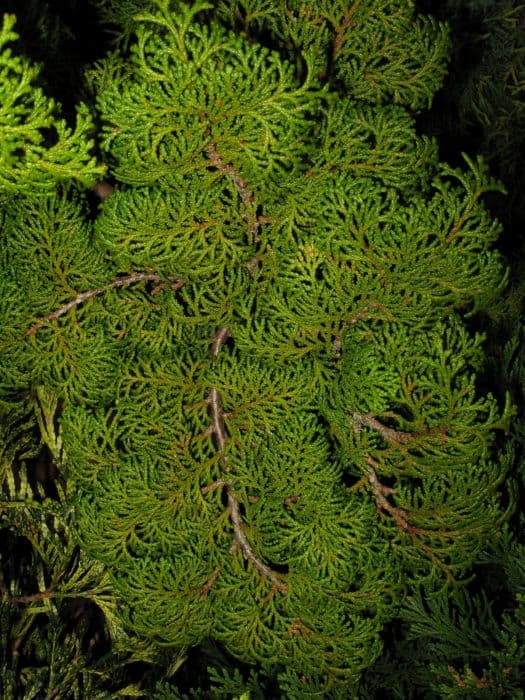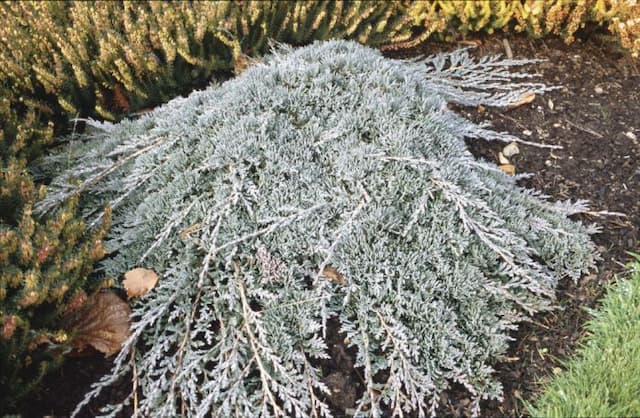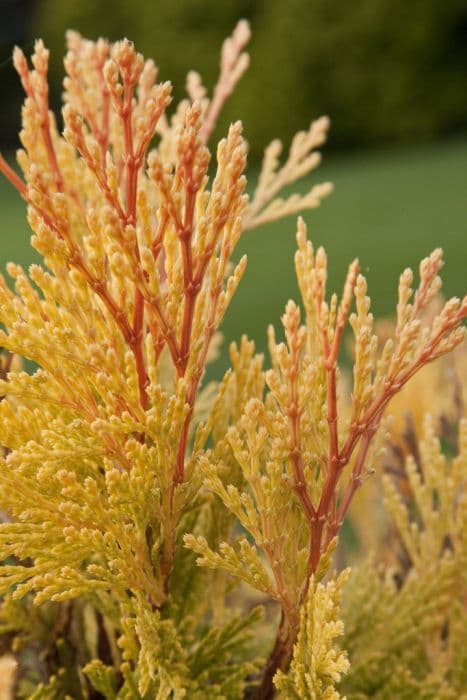Lawson's Cypress Chamaecyparis lawsoniana 'Grayswood Feather'
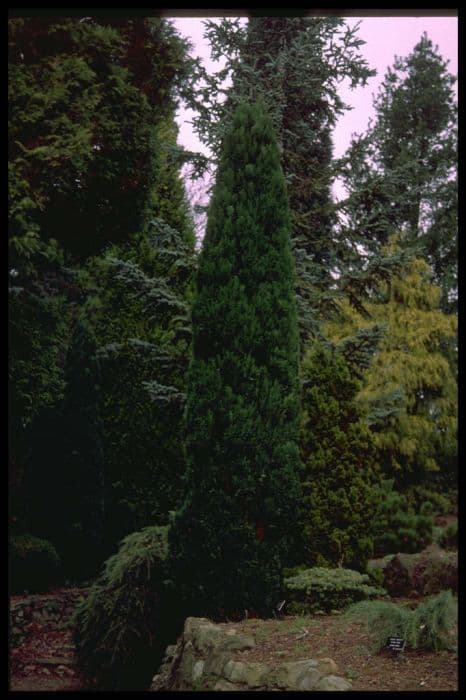

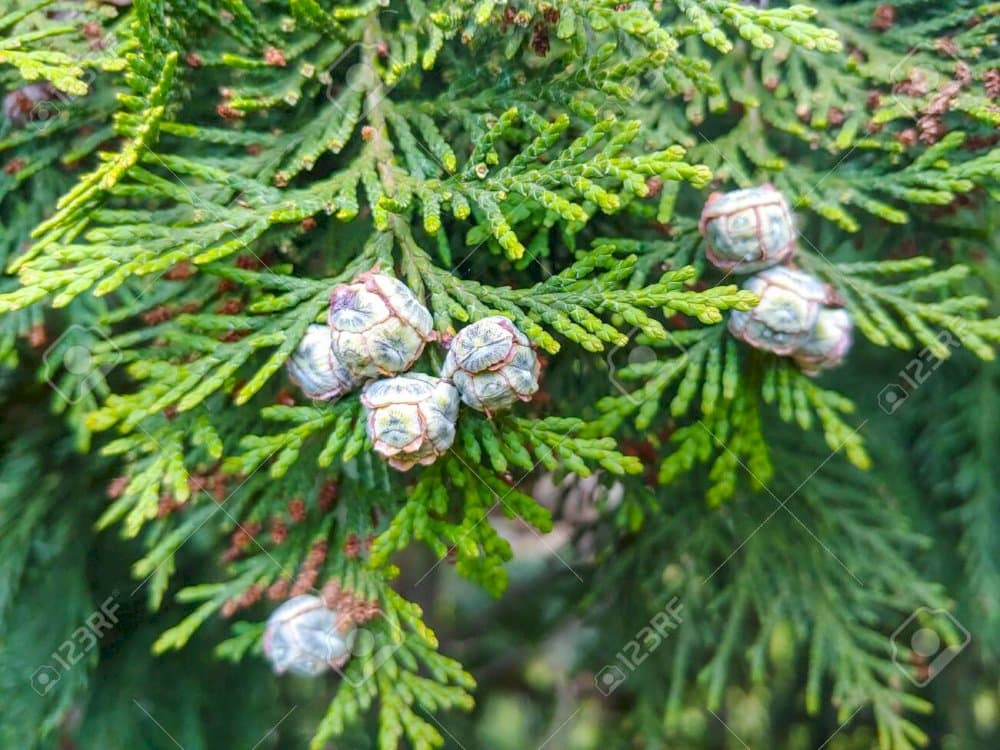
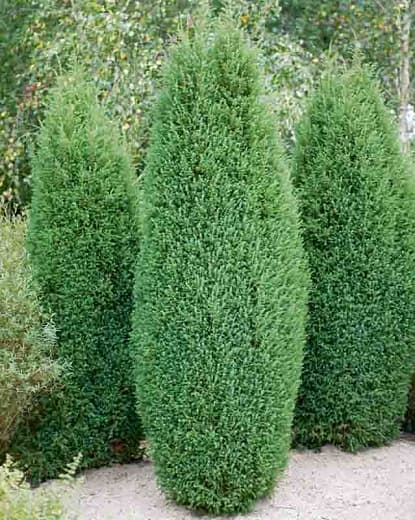
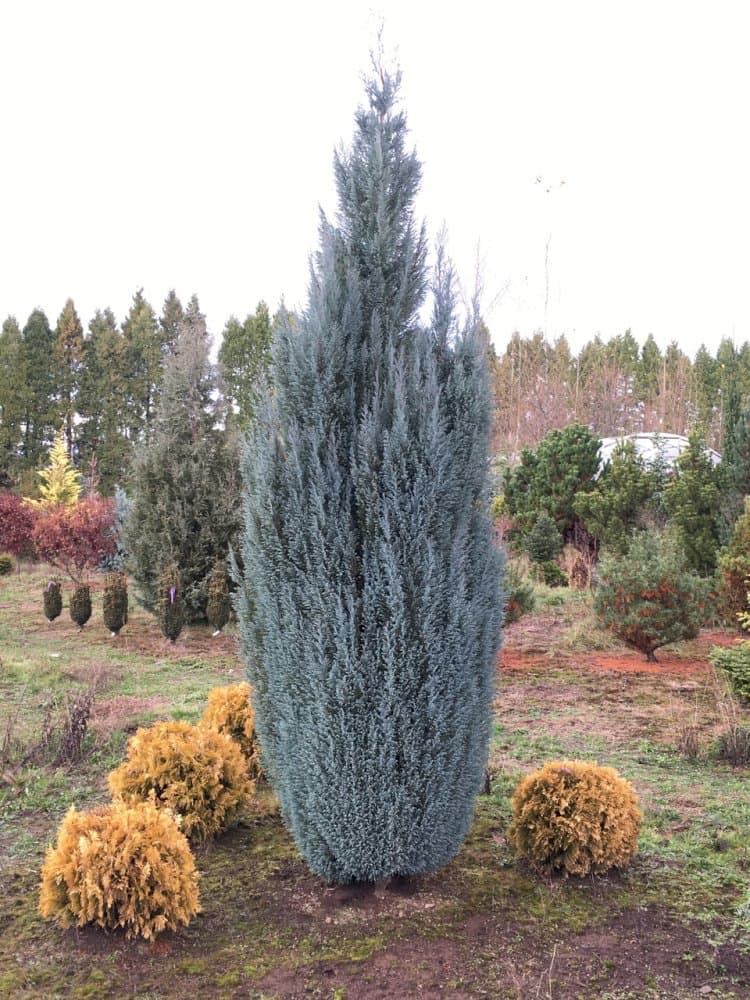
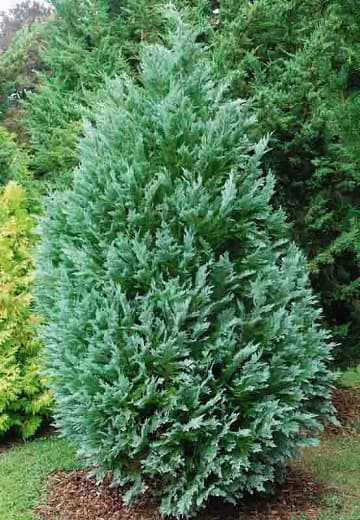

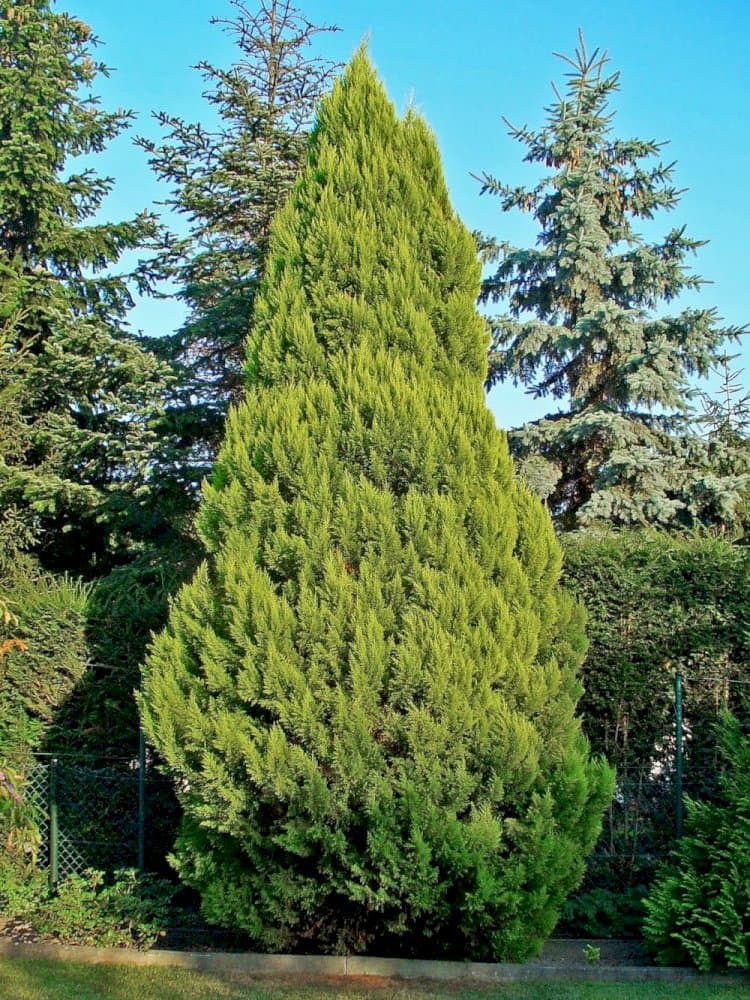
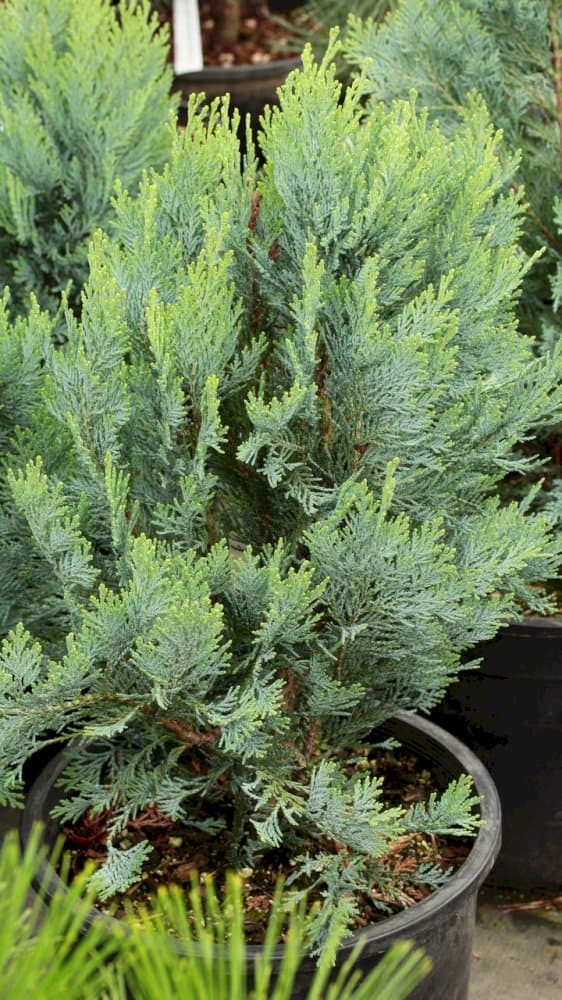
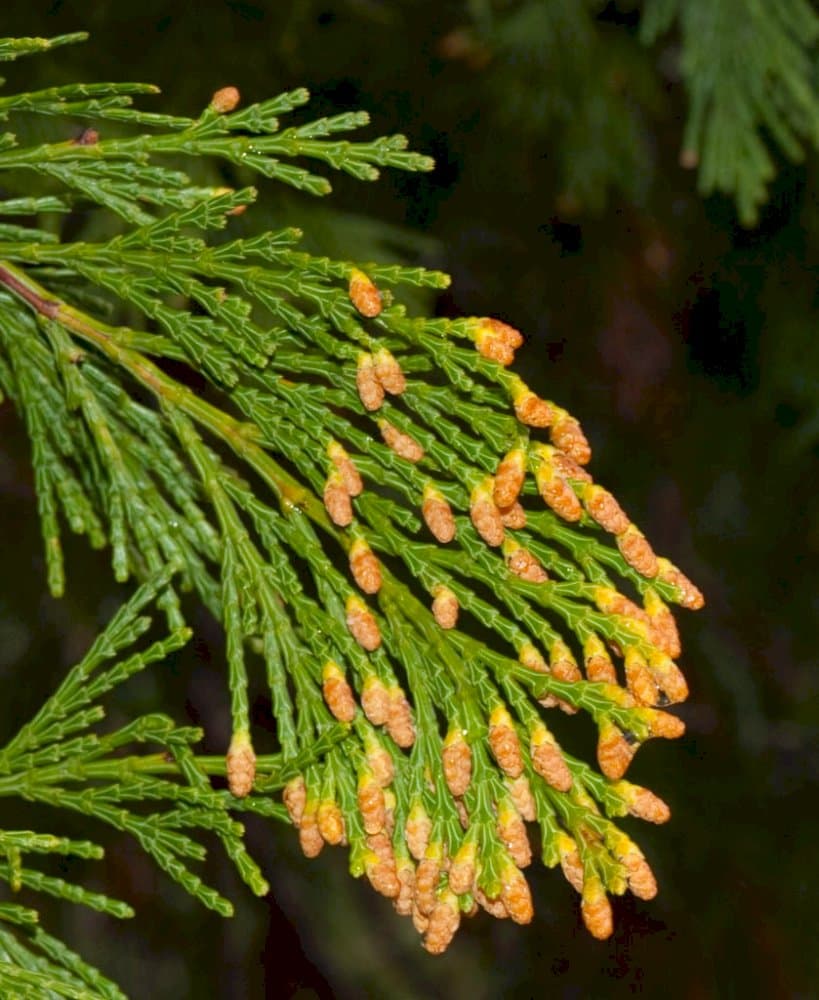
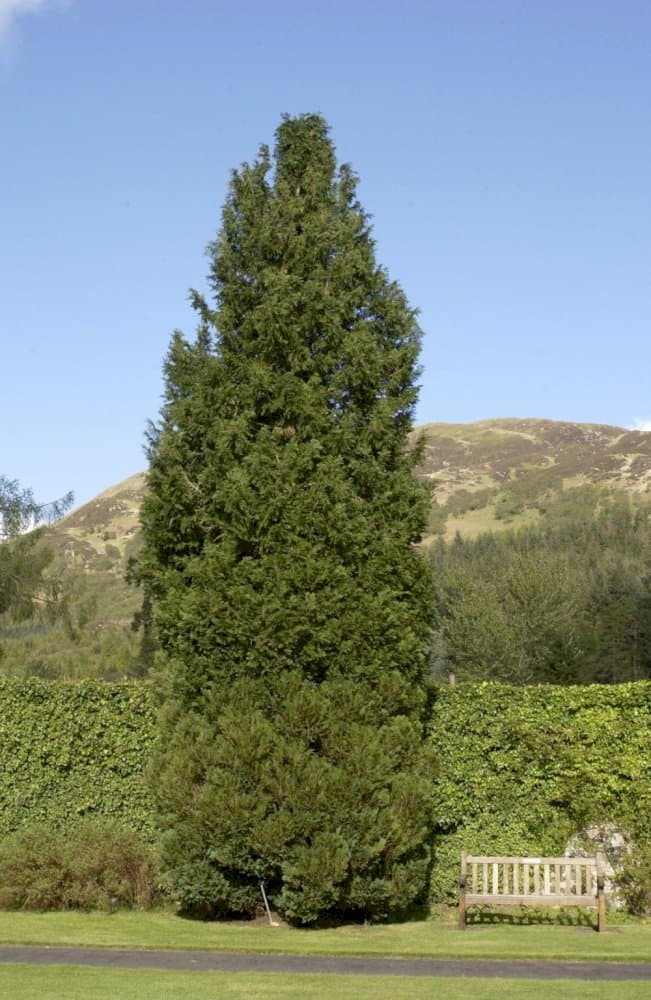
ABOUT
The plant known as Chamaecyparis lawsoniana 'Grayswood Feather' is distinct for its finely textured foliage, which gives it an airy and delicate appearance. The plant has a conical shape, featuring an arrangement of soft, feathery leaves that hang elegantly from the branches. The foliage presents a vibrant green hue that may have bluish or silver undertones, adding visual interest and variety to garden landscapes. The leaves of 'Grayswood Feather' are small and scale-like, closely pressed to the twiggy branches, providing a dense, fern-like quality that is pleasing to the eye. This plant often features gracefully arching branches that enhance its light and fluffy visual effect. The overall impression is one of a whimsical, soft pyramidal form that adds a gentle texture to the surroundings. As seasons change, the plant maintains its lush greenery, making it a valuable addition to spaces that require year-round color and texture. Its striking yet soothing appearance makes it a favored choice among gardeners looking to create a sense of calm and elegance in their garden designs.
About this plant
 Names
NamesFamily
Cupressaceae.
Synonyms
Lawson's Cypress, Port Orford Cedar, Oregon Cedar.
Common names
Chamaecyparis lawsoniana 'Grayswood Feather'.
 Toxicity
ToxicityTo humans
Lawson's Cypress is generally considered non-toxic to humans. There is no significant concern regarding poisoning from ingestion of this plant. However, as with many plants, individual allergies or sensitivities may cause mild irritation or discomfort if ingested or if the sap comes into contact with skin.
To pets
Lawson's Cypress is also generally regarded as non-toxic to pets. It is not known to cause serious poisoning if pets ingest parts of the plant. As with any non-food plant, consumption in large amounts could potentially cause mild gastrointestinal upset, such as vomiting or diarrhea, due to the physical irritation from plant fibers rather than chemical toxicity. It's always best to prevent pets from ingesting plants that are not part of their normal diet.
 Characteristics
CharacteristicsLife cycle
Perennials
Foliage type
Evergreen
Color of leaves
Green
Height
10-15 feet (3-4.5 meters)
Spread
4-6 feet (1.2-1.8 meters)
Plant type
Tree
Hardiness zones
5-8
Native area
North America
Benefits
 General Benefits
General Benefits- Ornamental Appeal: Chamaecyparis lawsoniana 'Grayswood Feather', commonly known as Lawson's Cypress, has fine, feathery foliage and a narrow, conical shape, which adds an elegant touch to landscapes.
- Low Maintenance: This plant requires minimal upkeep once established, aside from occasional watering and the rare need for pruning.
- Privacy Screen: Due to its dense growth habit, Lawson's Cypress can be used as a natural privacy screen or windbreak in gardens.
- Adaptability: It can adapt to a range of soil types, although it prefers moist, well-drained soils, making it suitable for various garden conditions.
- Habitat Support: Lawson's Cypress provides shelter and nesting sites for birds, contributing to local biodiversity.
- Erosion Control: The root system of this plant helps stabilize the soil, which can be particularly beneficial on slopes to prevent erosion.
- Year-Round Interest: With evergreen foliage, this cypress offers year-round color and structure in the garden.
 Medical Properties
Medical PropertiesThis plant is not used for medical purposes.
 Air-purifying Qualities
Air-purifying QualitiesThis plant is not specifically known for air purifying qualities.
 Other Uses
Other Uses- Chamaecyparis lawsoniana 'Grayswood Feather', commonly known as the Lawson cypress, can be used in woodworking and carpentry for its fine-grained, durable wood that is suitable for creating high-quality furniture and decorative items.
- Its wood is often used in the construction of musical instruments, such as soundboards for guitars and other stringed instruments, due to its tonal properties.
- The Lawson cypress can serve as a natural privacy screen in residential gardens, as its dense foliage can create an effective visual barrier.
- The tree is used in bonsai cultivation, where its natural elegance and conical shape make it a popular choice for miniature landscapes.
- Due to its slow growth and fine texture, the wood of Lawson cypress is sought after for crafting detailed wooden models and intricate carvings.
- As an ornamental tree, Lawson cypress 'Grayswood Feather' is used in themed gardens, including Japanese and woodland gardens for its aesthetic appeal.
- This variety of Lawson cypress can be incorporated into windbreaks or shelterbelts in rural areas to reduce soil erosion and provide protection from strong winds.
- Lawson cypress branches can be cut and used in seasonal wreaths and festive decorations due to their soft, feathery foliage.
- It can be employed in the creation of natural dyes, with various parts of the plant yielding different shades for textile dyeing.
- The aromatic wood chips of the Lawson cypress are sometimes used in potpourri blends, adding a forest-fresh scent to indoor spaces.
Interesting Facts
 Feng Shui
Feng ShuiThe Lawson's Cypress is not used in Feng Shui practice.
 Zodiac Sign Compitability
Zodiac Sign CompitabilityThe Lawson's Cypress is not used in astrology practice.
 Plant Symbolism
Plant Symbolism- Longevity: As an evergreen conifer, the Lawson's Cypress symbolizes long life and endurance through the changing seasons.
- Protection: With its dense foliage, the Lawson's Cypress is often seen as a symbol of shelter and protection from life's challenges.
- Sanctity: The tree's historic use in churchyards and its towering presence can signify sanctity and a connection to the spiritual or the divine.
- Purity: The fresh, clean scent of the Lawson's Cypress has associations with cleanliness and purity, often being used to clear the air or environment of negative energies.
 Water
WaterThe Lawson Cypress, also known as Chamaecyparis lawsoniana 'Grayswood Feather', should be watered deeply when the top few inches of soil feel dry to the touch. This typically equates to watering once or twice a week during the growing season, depending on weather conditions. Ensure that the water penetrates the soil to reach the roots without causing waterlogging. During hotter spells or if the plant is in a container, increase watering frequency as needed. On average, use about 1 to 2 gallons per watering session during regular weather, adjusting the amount as necessary to maintain consistent soil moisture.
 Light
LightThe Lawson Cypress requires full to partial sun for optimal growth. The ideal spot would be where it can receive at least four to six hours of direct sunlight daily. However, in hotter climates, it appreciates some afternoon shade to protect it from scorching heat.
 Temperature
TemperatureThe Lawson Cypress can survive in a range of temperatures but thrives best when the temperature consistently stays between 60°F and 70°F. Although this plant can handle minimum temperatures down to around -20°F, it is important to protect it from harsh winter winds. The maximum temperature for the Lawson Cypress should ideally not exceed 80°F, as prolonged higher temperatures may stress the plant.
 Pruning
PruningPrune the Lawson Cypress to maintain its shape and remove any dead or diseased branches. Pruning is best done in the late winter or early spring before new growth starts. Generally, pruning once a year is adequate; however, if shaping the plant for landscape purposes, additional light pruning in the growing season may be necessary. Always use clean, sharp tools to make clean cuts.
 Cleaning
CleaningAs needed
 Soil
SoilThe best soil mix for the Lawson's Cypress 'Grayswood Feather' is well-draining, with a balanced mixture of peat, compost, and coarse sand or perlite. The ideal pH for this conifer is slightly acidic to neutral, ranging between 5.5 and 7. Adequate organic matter in the soil will help maintain moisture while ensuring good drainage.
 Repotting
RepottingLawson's Cypress 'Grayswood Feather' generally does not require frequent repotting as it prefers to be root-bound. Repotting every 3-4 years, or when the root system outgrows the container, is sufficient to maintain its health and vigor.
 Humidity & Misting
Humidity & MistingLawson's Cypress 'Grayswood Feather' thrives best in moderate to high humidity levels. As conifers, they are adaptable to outdoor conditions, where humidity is naturally regulated, and will benefit from the higher humidity often found in cooler, coastal regions.
 Suitable locations
Suitable locationsIndoor
Provide bright light, avoid dry heat, and ensure good airflow.
Outdoor
Plant in full sun, shelter from strong winds, and mulch root area.
Hardiness zone
5-8 USDA
 Life cycle
Life cycleThe Chamaecyparis lawsoniana 'Grayswood Feather', commonly known as the Lawson's Cypress 'Grayswood Feather', begins its life cycle as a seed, which germinates in suitable moist and cool conditions. After sprouting, the seedling grows into a young sapling, developing a conical shape with finely textured, feather-like foliage. As an evergreen, it progresses to a mature tree, possibly reaching heights of up to 50 feet, with a steady growth rate and dense, pyramidal form. Throughout its life, the Lawson's Cypress 'Grayswood Feather' produces small cones, which mature and release seeds to perpetuate the species. The plant can live for several decades, continuing to grow and maintain its ornamental appearance if provided with the correct environmental conditions. Eventually, as with all living organisms, the tree will enter into a phase of decline, characterized by reduced vigor and possible susceptibility to pests and diseases, before it dies.
 Propogation
PropogationPropogation time
Spring-Early Summer
The most popular method of propagation for the Lawson's Cypress 'Grayswood Feather' is by semi-hardwood cuttings. Typically, this process is carried out in the later part of summer. Taking a cutting from a healthy parent plant involves selecting a 4-6 inch (10-15 cm) segment of semi-hardwood, which is the portion of the branch that is partially mature yet still flexible. The lower leaves are then stripped off and the base of the cutting is treated with a rooting hormone to encourage root development. The prepared cutting is then placed in a pot filled with a mixture of peat and perlite or coarse sand to provide good drainage and aeration. The cuttings should be kept in a warm, humid environment, out of direct sunlight, to root successfully. It generally takes a few months for the cuttings to root enough to be transplanted.


